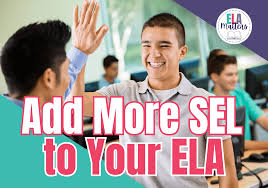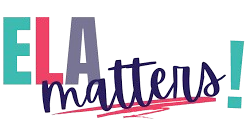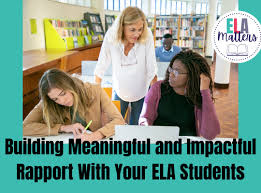When you think about your favourite teachers you had growing up, who comes to mind? Chances are, it wasn’t the one who knew the curriculum backwards and forwards or had perfect lesson plans, it was likely the one who made you feel important, who took an interest in your life, and encouraged you to dream big.
Building a meaningful rapport with our students can lead to higher motivation, better communication, and a sense of belonging for everyone in our classroom.
So, what is the secret formula to building a good rapport with our students? I believe that the key to creating meaningful and impactful relationships with students lies in our ability as teachers to find what makes each individual light up inside. What inspires them? What motivates them? What makes them laugh?
As ELA teachers, we have an abundance of opportunities to gain insight on our students through their creative, written, and verbal expression. Here are four ways I’ve built a meaningful rapport with students in my English classroom:
1. Journal Writing
At the beginning of the school year I hand out a journal booklet to each of my students and I give the disclaimer that they can either be kept with the individual or I can keep them safe in the classroom. I also let them know that I will be the only person who reads them, unless there is something disclosed that I have a duty to report.
I’ve found that journal writing is not only a great insight for me into the lives of my students, but it’s very cathartic for them as well. Sometimes I ask them to write about a specific topic like what their favourite time of day is, or what they think life will be like a hundred years from now, or sometimes I just ask them to write about their day or how they’re feeling. There have also been times when motivation is low so I just ask them to draw.
You can learn so much from your students through their writing, and you can apply this to your teaching and the types of questioning you use, or hooks you incorporate into lessons.
2. Using Pop Culture
As English teachers, we have a prime opportunity to incorporate the pop culture that our students are consuming into our lessons, which captures interest and increases capacity to retain information. It also gives us an ideal scenario for rapport-building as we can engage students in a topic they feel like experts on and let them teach us.
Using music in your lessons can be particularly impactful because it allows for a back and forth dialogue with students where they can feel safe describing their opinions or emotions in relation to a song. It is also rewarding to be able to introduce our students to music they may not have heard before and have discussions with them where it is evident how their opinions and impressions are valued and important.
3. Visualization Drawings
One of my favourite activities to help students analyse literature is to have them draw what they visualize while I read a passage to them. This activity also lends itself well to relationship building with students because their drawings are instant conversation starters.
Circulate the classroom and talk to students about their drawings. Their answers about why they chose to include or emphasize specific details can lead to some really interesting discussions and give you new insights or understandings about your students.

4. Text Connections
One of the main reading strategies I use with my students to help them become active readers is making text connections. As we read a text, I ask students to think about “text to self,” “text to text,” and “text to world” connections.
The connections that students are able to make to the texts they read or view can be an invaluable source of insight on the student themselves. As a teacher, asking students to reflect on these connections lets me know how their personal experiences are similar or different to what we are reading, other texts they enjoy or are familiar with, and their scope of knowledge of the world around them. These are all things that can be drawn upon in turn to build connections with the student.

